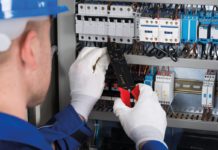
Flexalen 600 pipe work available from Flexenergy, a UK provider of district heating networks, is now Cradle to Cradle Certified™ Silver. This certification can be seen as an international acknowledgement that Flexalen 600 is produced responsibly and contributes to a sustainable world.
The Flexalen insulated plastic pipe is manufactured by Thermaflex in Holland for whom Flexenergy acts as the UK partner. The pipe system has a long lifetime, is light weight and easy to install and can be reused through recycling either again in its current form, or as raw material for new products. Flexalen contributes to low(er) costs over the lifetime of networks and has a positive environmental balance.
Flexenergy’s Sales Director, Sandy Fairley, commented: “The Silver Certification is a fantastic acknowledgement of the environmental properties of the Flexalen 600 pipe work. In today’s demanding society there is an increasing need for safe, affordable and reliable access to sustainable heating, cooling and potable water. Particularly in the case of heating, an efficient heat infrastructure is essential to provide the requested convenience, comfort and safety and preserve a building over the long term. The increasing growth in the use of plastic pipe systems as an alternative to steel or composite pipe networks, is a clear indication of their economic benefits. Plastic pipes also have a longer lifetime and now with Flexalen 600, significantly less impact on the environment.”
Building developers, owners and end-users are becoming increasingly aware of the value and importance of products with a sustainable design. For a developer, durable and energy-efficient piping systems and insulation are usually foremost assets to secure when aiming for LEED or BREEAM-certified buildings. For an owner, the value of the property is simply much higher when high quality materials with a long lifetime are used, while ensuring a maintenance-free living environment for residents. But most important are the end-users, who get to enjoy a healthy and comfortable indoor climate at minimal financial and environmental cost.







